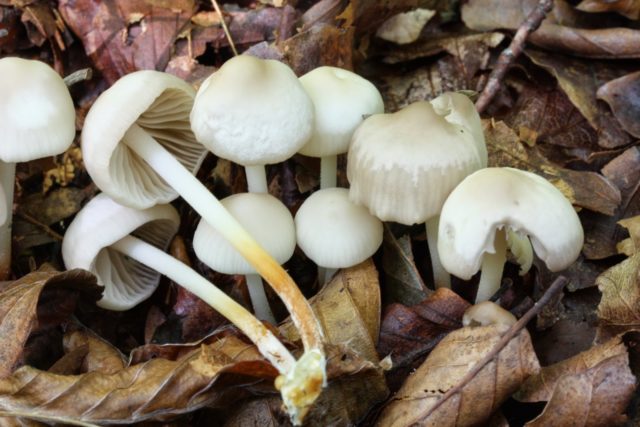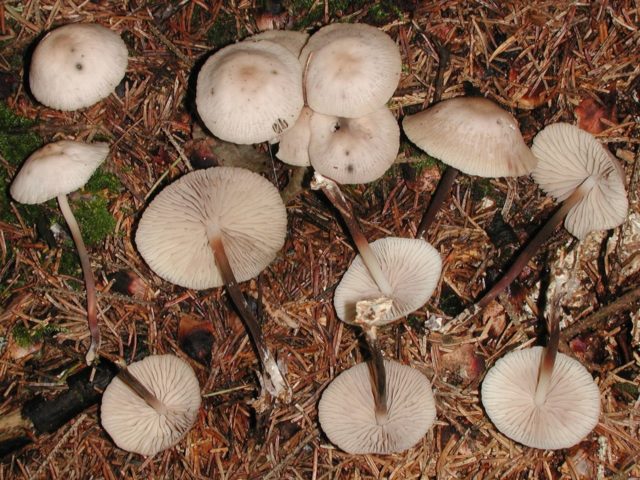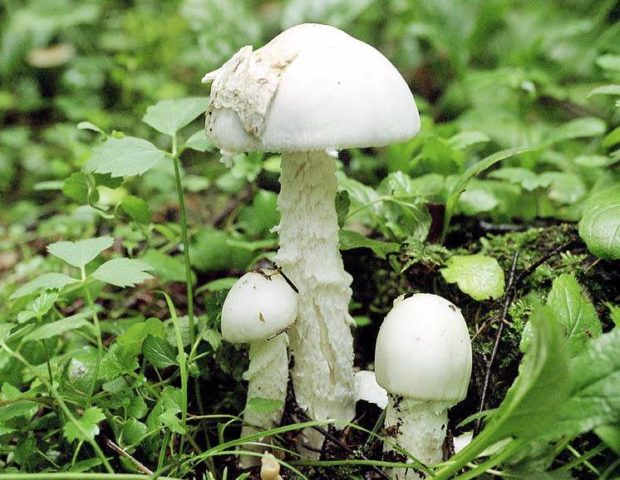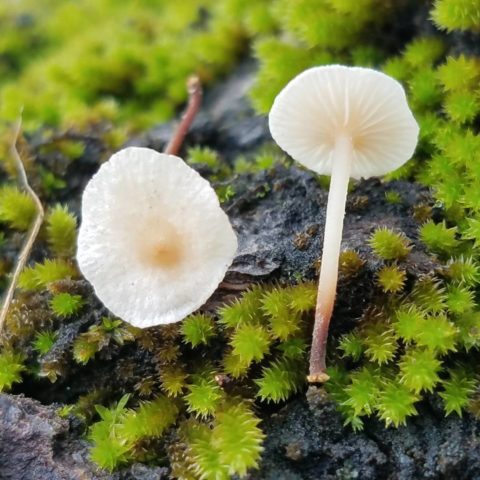Content
Spherical Negnium is an edible member of the Negnium family. The Latin name for this specimen is Marasmius wynnei.
What does the spherical non-iron pot look like?
The fruiting body of the spherical nonnium is represented by a small white cap and a thin stem of a dark shade. The spores are ellipsoidal, smooth and colorless.
Description of the hat
In a young mushroom, the cap is convex, with age it becomes prostrate. It differs in a rather small size, which varies from 2 to 4 cm. The surface is smooth and white, with aging it can acquire a gray-purple hue. The edges are uneven, ribbed. On the inner side, rare, white and pale gray plates are located high.
Leg description
The leg of the spherical non-nylon is rather short, its maximum length reaches about 4 cm, and the thickness is 2 - 2.5 mm. Slightly widened at the top. At the base, the color of the leg is brown, smoothly turning into light, matching the shade of the upper part.
Where and how it grows
The active development of this species falls on the period from July to October. The spherical iris prefers deciduous, mixed and coniferous forests. As a rule, it grows on deciduous litter, less often it grows on conifers.
Is the mushroom edible or not
Belongs to the category of edible mushrooms. It is believed that this specimen is suitable for use in food in any form, however, it is preferable to boil or salt it.
Doubles and their differences
The spherical iris has external similarities with the following varieties of forest gifts:
- Stinky fly agaric, which is poisonous. At a young age, it is difficult to confuse it, since at the stage of maturation, the cap is hidden by a veil, but with age it opens and acquires similar features with the species in question. One of the main differences from the globular nonnium is the rather large size of the fruiting body. So, the diameter of the cap of the fly agaric is more than twice and is about 10 cm. In addition, even an inexperienced mushroom picker will notice a cup-shaped volva near the base of the leg, which belongs to a poisonous mushroom.
- Common garlic - has a cap similar in shape, however, a distinctive feature is the frequent arrangement of the plates, as well as a noticeable speck of a darker color located in the center of the cap. In addition, the double has a pronounced smell of garlic, for which it received the corresponding name. Edible.
Conclusion
It is possible to distinguish the globular nonnium from other mushrooms by its short brown stalk, rare plates and a white hat. You can meet him in almost any forest, as well as on lawns and in artisanal thickets. Seeing such a specimen, you should not pass by, since it belongs to the edible gifts of the forest.













